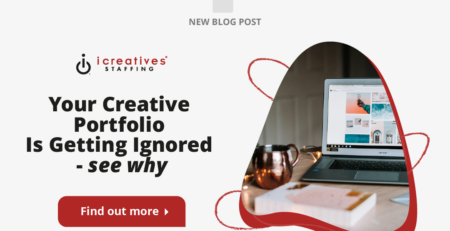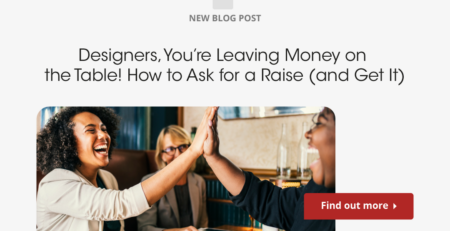Creative Innovation At A Sustainable Pace
Innovation and sustainability don’t have to be at odds. Truly sustainable business practices center around long-term planning and eschew short-term goals. Too many companies have expanded at too fast a pace only to run out of steam or crumble under their own weight.
Concern for the environment is on the rise and industries have to address that. Recyclable packaging and “responsibly-sourced” products are not enough. For many millennials and zoomers, there is a growing fear that the lifestyle of their parents will not be available to them.
Altruism and business intersect at sustainability. If you want your business to survive, your projects to appeal to people, and reach as wide an audience as possible with your messaging, you have to innovate at a sustainable pace.
Sustainable means different things for companies of different sizes. It’s not only about the environment – it’s also about what your company can handle without buckling. Read on to find out how you can continue spurring creative innovation without exceeding your company’s capabilities.
What Is Responsible Innovation?
Beyond simply merging business goals and social concerns, responsible innovation treats the societal impact of a product or service as part of the overhead cost. Since there’s probably not a price tag attached, the consideration is a bit different from other costs of production.
An easy example is the consumption of raw materials. Every company wants to sell as much as possible but sustainable business practices entail not manufacturing so much that all available raw materials are consumed. This calculation could look like what the company accountants are used to since there is a definite price tag on raw materials.
Environmental concerns are just part of the concern. Things like poverty and infrastructure access have also been addressed by corporate innovations. Unlike previous decades when this would be done strictly through charitable donations or funds, companies are now using branding and innovation to make a positive social impact.
The world still has its problems. But companies are stepping up in a way they haven’t really done before. Some are pairing purchases with contributions or in-kind donations to NGOs or other services that help impoverished people. The business cycle can also be a great place for innovation to support sustainability initiatives.

Are Sustainable Business Practices Always Responsible Innovation?
Since it is still a relatively new field of thought, many business leaders have yet to pair responsible innovation with truly sustainable business practices. Doing so isn’t just an appeal to customer bases with social concerns or ethical posturing by the brand – it’s key to the company’s survival.
Hopefully, most businesses already consider the limits of their production processes and resource extraction where applicable. It’s comforting to think that this is baked into their accounting and planning strategies.
Organizations such as The U.S. Chamber of Commerce Foundation have publicly discussed how companies can limit their consumption of finite resources, which is a good sign that the issue of sustainable business practices isn’t being completely ignored.
Sometimes sustainable business practices lack the ingenuity to be considered innovation. Responsible innovation could be socially conscious without touching the production aspect of the business cycle. The right strategy will consider both and commerce-minded people should do the same.
Creative Innovation In The 21st Century
A little over two decades in, we can comfortably say that life has already radically changed from what it was at the end of the 20th century. That may be a bummer in some ways but there are countless examples of innovation that have made life better and more enjoyable for multitudes of people.
As it has for many years, artificial intelligence is the buzzword of tech. But social media and better networking have also had a positive impact on overall accessibility to the internet. We can do more now with digital technology than we ever could before and that tech is in the hands of the consumer in unprecedented ways.
Creatives like UX/UI designers have brought business innovation closer to the customer. They also have a big role to play when it comes to sustainable business growth because design-driven organizations can make their products more appealing by retooling them. Many brands have had success implementing design thinking to grow their customer base while consuming fewer resources per product.
We don’t know where the future of innovation lies. But it’s clear that businesses that fail to consider the concept of sustainability in their long-term planning will harm the planet, society, and their bottom line.
Ensuring Innovation In Sustainability Initiatives
Sometimes businesses approach social responsibility and green initiatives as incidentals. Polish the brand image and use the new eco-friendly packaging for marketing and that’s pretty much it.
Companies that take this approach are missing out on a lot and wrecking their positioning for the future. The right strategy is to integrate these social initiatives into the overall innovation plan. That doesn’t mean the team should simply consider them more or they should be a higher priority – these are the conditions under which you are working.
Thinking about products and services in a vacuum is overly simplistic and even old-fashioned. No matter what you’re producing or how insignificant it might be compared to products with a higher price tag, it has an impact on the world.
User research is making major strides as UX design continues advancing at its breakneck pace. People involved in that design and research should not only be considering how people use the product but how the manufacturing, selling, and use of that product impacts things like users’ standards of living, environment, and overall well-being.
Most of the design team and the others responsible for the product are bound to exaggerate its importance or relevance to people’s lives. Truly understanding that a certain item or service is a non-necessity or luxury item might be a hard pill to swallow, but it will give everyone from the CEO to the marketing department the right frame of reference.
If your goal is creative innovation, you have to look at things as they are. When you want to include sustainability initiatives, that becomes even more important. You can’t make the user’s world better if you don’t understand it.
The Speed Of Innovation
What do we mean by innovation in this context? Let’s take a look at some things that have happened since the end of 2019.
The push to digitize products and services was paramount to survival for many small and mid-sized companies faced with unprecedented social distancing and lockdown measures. What would have taken years under pre-pandemic conditions was accomplished (at least partially) in just a few months.
Supply chains were heavily impacted by the closing of borders and the inability of supporting staff to go to work in some cases. Factories were shuttered or temporarily shut down when employees got sick and crucial raw materials or refined goods became limited or unavailable.
Many Americans were shocked to see store shelves empty of cleaning products due to hoarding and an increase in immediate demand that the supply chain was not prepared for. As employees at one large meatpacking plant in Brazil fell ill, meat also became scarce for a few months.
Innovation also occurs beyond the supply chain. App development has made services available to wider audiences who were previously limited by space and transportation availability. Companies that already had a large online presence were fairly well-positioned, but they continued to innovate with new ideas that made their products and services even easier to use.
Financial services had to accommodate people suddenly doing all of their banking and purchasing online. Of course, there were already plenty of online payments and services like PayPal in place for these purposes. But they all had to deal with higher traffic, more data, and a more ubiquitous demand.
Users didn’t just want these payment options for paychecks temporarily, they wanted to have a fast and easy way to pay for whatever they buy anywhere they go. Besides the expansion of existing services, businesses also have to maintain their innovative edge to stay relevant. Progress plays a huge role in people’s perceptions of their own success.
You don’t have to go back to square one or reinvent the wheel, but many companies did have to revamp their business model from its very core. To facilitate this innovation at a fast pace, organizational models need to be changed and employment arrangements also need to be made more flexible.
When Should You Increase The Speed Of Innovation?
Most large recent changes were a reaction to specific, (hopefully) once-in-a-lifetime events. These external factors were live-or-die crises for entire industries. But absent these unprecedented circumstances, when should businesses be aiming for quick innovation?
If your answer is ‘all the time,’ you’re off the mark. The best way to burn through valuable time and resources with low returns is to innovate incessantly regardless of context. Management studies identify three environments where fast-paced innovation is most appropriate:
- High Competition
Businesses are always trying to outdo one another. To reach the consumer and entice them to buy your product over another, you have to stay on the cutting edge. Sure, there are budget versions of most products, but those are never the ones that corner the market.
Competition puts pressure on companies and the development teams within them. If many companies are able to get tons of products on the market, that’s also a sign that the market and the supply chain are both healthy.
- Tech & Market Dynamism
Market dynamics are the things that affect supply and demand. Technology prices and availability are susceptible to the same dynamics as the market more broadly. Factors such as human emotions, the job market, and government policy all impact how much people want and can afford, as well as how much companies can produce.
- Few Regulatory Restrictions
If governments and other policymakers don’t limit what the company can do, then innovation comes more naturally. But it’s also open-ended innovation – it’s not necessarily responsible innovation. Some companies are unfortunately likely to put their creative energy toward reducing costs or tweaking their processes if they can get away with it.
When we’re talking about sustainable business practices and creative innovation, government regulations can be something of a double-edged sword. That’s why policymakers debate so long before enacting most policies. Restricting the economy stifles innovation but companies with no rules might forego useful innovation in favor of new ideas that just save them money.
Organizational Structures for Responsible Innovation
Companies have a responsibility not only to the people who buy their products and services but also to their employees and contractors. Many businesses had to change the structure of their organizations to meet social distancing and health requirements. Some also found that they were better poised to innovate and reach new heights with a more agile structure.
What does agility mean in a business sense? Agility is the organization’s ability to respond to new information. It might be a change in the market, new tech, or world events. Agile organizations are able to brainstorm and implement new strategies to reap the benefits of changes before anyone else.
There are several different structures an organization might use. They’re either flat with few or no bosses in the traditional sense or they could be vertical with a strict hierarchy. Each has its advantages. Teams could be siloed or they could be overlapping. Again, depending on the industry and what the company offers, either one might be most advantageous.
Managers should make sure that they also have the kind of structure that will allow the company to get where it wants to go without leaving employees behind. Think of Business A responding to new health measures by opening up more remote positions so people no longer have to come into the office. Employees without access to technology might get left behind, which is why companies with any sense provide these resources for their workers.
Can The Speed Of Innovation Be Too Fast?
It would be a huge relief to be able to instantly come up with new ideas and present new product lines without any delay. But that’s just not realistic.
For one thing, really fast innovation is less likely to go through any kind of checks and balances system. Trial and error plays a big role in iterative design thinking, for example. One way some companies might try to get more agile in the short term is to reduce these trials. That’s a great way to present a less appealing product even if it does come out faster.
Plus, consumers can only use products so quickly. Maybe we all want a new flashy car every year in our minds, but in practice, we form a bond with our vehicles and enjoy the ones that work for 5 years or more. Most people would probably stay in the same car for ten years if it still works and looks nice.
Bear in mind that people don’t like cheap goods that wear out quickly. A new phone with a cool new camera is great and everything, but no one wants to have to buy another one because the first one wore out. Companies can’t push the life cycle of a product too quickly or they’ll damage their brand.
When the speed of innovation is so fast that it creates new problems we’re not equipped to solve, we find ourselves in what some theorists refer to as a progress trap. Businesses can have a similar problem. While things like desertification are the result of the progress trap on a global scale, an individual company could face supply chain breakdowns or run out of a key resource if they run ahead of themselves.

Conclusion:
In the end, responsible innovation isn’t only for the good of the environment or a customer base alone. Companies benefit from taking a reasonable and honest look at what they could possibly do in the best-case scenario. Setting goals is one thing, but when good fortune strikes many companies run and gun all the way to ruin.
Acknowledge the uppermost limits as well as the bottom line in your business planning and you’ll be much better prepared for whatever comes in the future. Sometimes conditions can be too favorable and businesses can be a little too innovative for their own good. Use the planning advice in this guide to sustainable innovation to avoid the same fate.












